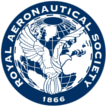‘Cleared to Land’ is a critical review of the politics of planning and the political scheming that took place during the search for London’s 3rd airport. Why was Stansted selected when it didn’t meet any of the criteria laid down for the 3rd airport? How were the costs distorted to favour Stansted in the face of public opposition to it? And who was the puppet master pulling the political strings behind the scenes? Cleared to Land offers some insights into the machinations of government and the planning process and advocates that if the saga of Terminal Five and the Third runway at Heathrow are anything to go by then nothing has really changed during the last 40 years.
In Section : Branch D to M
Branch D to M.
LECTURE: Missed Approaches - Politics of Airport Planning
Added on 17 January 2011 by jamesallen
Tags: airport planning, airport planning review, lecture, paul hogan, Stansted, Terminal Five, Third runway at Heathrow
BRANCH LECTURE: Victor Tanker Operations
Added on 17 December 2010 by admin
Medway Branch Lecture:
Speaker: Air Cdre Norman Bonnor.
BRANCH LECTURE: UAV Systems, Breakthroughs and Hurdles
Added on 17 December 2010 by admin
Loughborough Branch lecture:
This lecture will present a brief history of UAV systems, leading to the current state-of-the-art and the reasons behind the recent growth in UAV activity. The future prospects for UAVs, both in civil and military operations, will be considered. Challenges in their development, with special emphasis on autonomy and regulations, will be discussed.
Speakers:
Dr. Arthur G Richards
Lecturer in Controls and Dynamics
Department of Aerospace Engineering
University of Bristol
Dr Richards obtained a MEng from the University of Cambridge in 2000. He then went to the Department of Aeronautics and Astronautics at the Massachusetts Institute of Technology, where he obtained a MSc in 2002 for research on trajectory optimization using Mixed-Integer Linear Programming (MILP). He stayed at MIT and completed his PhD in 2004 with research on robust Model Predictive Control (MPC). He came to Bristol later in 2004 when he was appointed a lecturer in control and dynamics.
BRANCH LECTURE: Concorde – From Beginning to End
Added on 17 December 2010 by admin
Loughborough Branch lecture:
The activities of the Supersonic Transport Aircraft Committee in 1950 will be described. The large military supersonic aircraft of the 1960s will be reviewed together with their principle problems, in the main their propulsion systems. Concorde followedon from these military aircraft. It will be described in detail especially in relation to its propulsion system. A number of in-service incidents including visits to NASA for FAA certification will also be described.
Speakers:
Ted Talbot
Ted was educated at Ashby-de-la-Zouch Grammar School followed by RAF Henlow, Loughborough College and London University.
He was first employed by the Bristol Aeroplane Company where he progressed through the offices of Aerodynamics, Projects, Powerplant, Mechanical Engineering and Systems. Over time the company became the Airbus Division of British Aerospace. Ted rose to the position of Chief Design Engineer, Airbus Division, Hatfield.
During 8 years at Filton he was party to introducing a design project to Bristol University. This project was supported by 8 Airbus senior design engineers. The project still continues in modified form.
Post retirement he was recalled to assist with the investigations into the Concorde crash at Gonnesse, Paris in the year 2000.
BRANCH LECTURE: Astute Submarine Programme
Added on 17 December 2010 by admin
Farnborough Branch lecture:
Speaker: Simon Purvis.
BRANCH LECTURE: Alcock and Brown (planned)
Added on 17 December 2010 by admin
Medway Branch lecture:
Speaker: Mr Peter Elliott (to be confirmed).
BRANCH LECTURE: Advanced Space Concepts …the distance between dreams and reality
Added on 17 December 2010 by admin
Highland Branch lecture:
This presentation will cover the active research within the Advanced Space Concepts Laboratory of the University of Strathclyde and present a new, fresh vision of space exploitation and exploration for the next 50-100 years.
Speaker: Dr. Malcolm Macdonald
Malcolm Macdonald is the Associate Director of the Advanced Space Concepts Laboratory at the University of Strathclyde. He is widely acknowledged as an expert in the development and application of advanced space mission systems, challenging conventional ideas to enable radical change in the near term. It is widely recognised that his work in the innovation, development and application of solar sail technology has critically defined the recent global advances within this field.
Macdonald has a diverse research track-record, from advanced astrodynamics to the study of technology requirements for a range of future deep-space science missions ahead of the recent ESA Cosmic Vision call. His track-record further extends across swarm engineering, the development of nano-spacecraft and Unmanned Autonomous Systems. He also worked as a senior member of technical staff at SciSys Ltd., working on several projects throughout the entire life cycle, including as a technical lead on the LISA-Pathfinder attitude control software. He also lead a range of research and technology projects across modelling and simulation, formation flying, planetary entry, descent and landing systems, mission analysis and unmanned autonomous systems.
Macdonald’s work is reported in over 20 peer reviewed international journal papers, including invited reviews (in, for example, Journal Guidance, Control and Dynamics) and prize winning publications, such as the Royal Aeronautical Society Ackroyd Stuart Propulsion Prize (2003). His work has also been reported at almost 30 international conferences, including invited reviews and keynote addresses. He is also the Editor-in-Chief of a major new international handbook of space technology due for publication in 2012.
Recent research has been funded by a diverse range of international partners including Research Councils (EPSRC, STFC, NERC), the European Space Agency and industry. He is an Associate Editor of the American Institute of Aeronautics and Astronaut.
BRANCH LECTURE: RAeS Loughbough Branch AGM
Added on 17 December 2010 by admin
Speakers: RAeS Loughborough Branch Committee.
BRANCH LECTURE: Saunders Roe and the Princess Flying Boat
Added on 17 December 2010 by admin
Loughborough Branch lecture:
The lecture will describe the background to the formation and evolution of the Saunders Roe Company at Columbine Works, East Cowes. The origins of the “large flying boat” concept are traced that resulted in a UK Government contract being placed in 1945 with Saunders Roe for design and construction of the SR45 Princess, with BOAC as a somewhat reluctant “customer”. Design, development and construction of the Princess and the facilities employed at East Cowes in the course of the project are described together with the build up to the first flight and flight test programme. The reasons for the eventual demise of the Princess are identified that eventually led to all three Princess craft being scrapped in the 1960s, despite various efforts to find an alternative use. Some relics of Saunders Roe and the Princess project that remain in existence are identified, however, the Saunders Roe Company faded from view when it lost its independence in 1958 following acquisition by the Westland Group.
Speakers:
Bob Wealthy
Bob Wealthy has an interest in the history of the British aviation industry with special attention to the companies in the Solent Region. He was born on the Isle of Wight and the Saunders Roe Company was a major part of Island life through to the late 1950s and this and regular attendance at Farnborough Shows influenced his continuing interest in the subject of aviation which has continued on and off to the present day.
He has now retired from work in the defence electronics industry where he started as an apprentice with GEC in 1959. There he was fortunate enough to work in the emerging field of space systems. Having worked on a number of technology and scientific research satellite projects he spent the last 10 years as a systems engineer with the Skynet 5 Military Satellite Communications System project with the EADS Astrium Company that had acquired the consolidated parts of the UK’s space industry from BAE Systems. He now spends more of his time on his aviation heritage research and shares some of the knowledge that he has gained about past achievements in aircraft engineering.
BRANCH LECTURE: AGM followed by Propellers: past, present and future
Added on 17 December 2010 by admin
Farnborough Branch lecture:
Speaker: Patrick Hassell
Rolls Royce Heritage Trust.
BRANCH LECTURE: “Amelie’s boys – the flying McCuddens”
Added on 17 December 2010 by admin
Gloucester & Cheltenham Branch lecture:
Speaker: Capt. David Rowland FRIN, FRAeS.
BRANCH LECTURE: Medway Branch AGM plus supporting program (tbd)
Added on 17 December 2010 by admin
TBA.
BRANCH LECTURE: From the Solar System to the Edge of the Observable Universe
Added on 17 December 2010 by admin
Highland Branch lecture:
We live in exciting times, when we can tell the story of the evolution of our universe from when it was a fraction of a second old until the present day and even look into the future. In this richly illustrated lecture, Robin will cover new discoveries inour solar system, how stars are born and die, explain the importance of dark matter and vacuum energy and show the deepest image ever obtained of our universe.
Speakers:
Dr Robin Catchpole
Robin has recently retired as Senior Astronomer at the Royal Observatory Greenwich, currently works at the Institute of Astronomy, Cambridge, and has been an astronomer all his life. He has authored and co-authored over 100 research papers and used a number of telescopes around the world including the Hubble Space Telescope. His research interests include the composition of stars, exploding stars, the structure of our Galaxy and galaxies with black holes at their centres. He has given many lectures and radio and TV interviews.
BRANCH LECTURE: The A380 Story and What’s Next?
Added on 17 December 2010 by admin
The lecture takes the story of the A380 through from its inception to its Entry into Service, a period of nearly 20 years! The market traffic outlook and the airline requirements that led to the A380 project are described, moving through details of the aircraft definition and key issues for such a large aircraft; choice of fuselage cross section, wing design, weight reduction, ground handling etc, and on to manufacture, flight test and its (late) entry into service. The lecture finishes with a review of the new economic and environmental drivers for future large civil aircraft and some of the new technologies and aircraft configurations we may see beyond the A380.
Speakers:
Professor Jeff Jupp
Jeff Jupp recently retired as Director Technical, Airbus UK, and is currently Visiting Professor at Bath University. Having graduated with first class honours at Queens’ College Cambridge, he started his career in Civil Aircraft Design in the Aerodynamics Department at Hawker Siddeley, Hatfield, before moving with the Airbus project to British Aerospace at Filton, Bristol,where he was appointed Engineering Director in 1993. He is the joint holder of the 1993 Royal Society ‘Esso Energy
Award’ Gold Medal.
BRANCH LECTURE: The Cube Sail satellite recovery system
Added on 17 December 2010 by admin
Speakers: Dr. Vaios Lappas.






